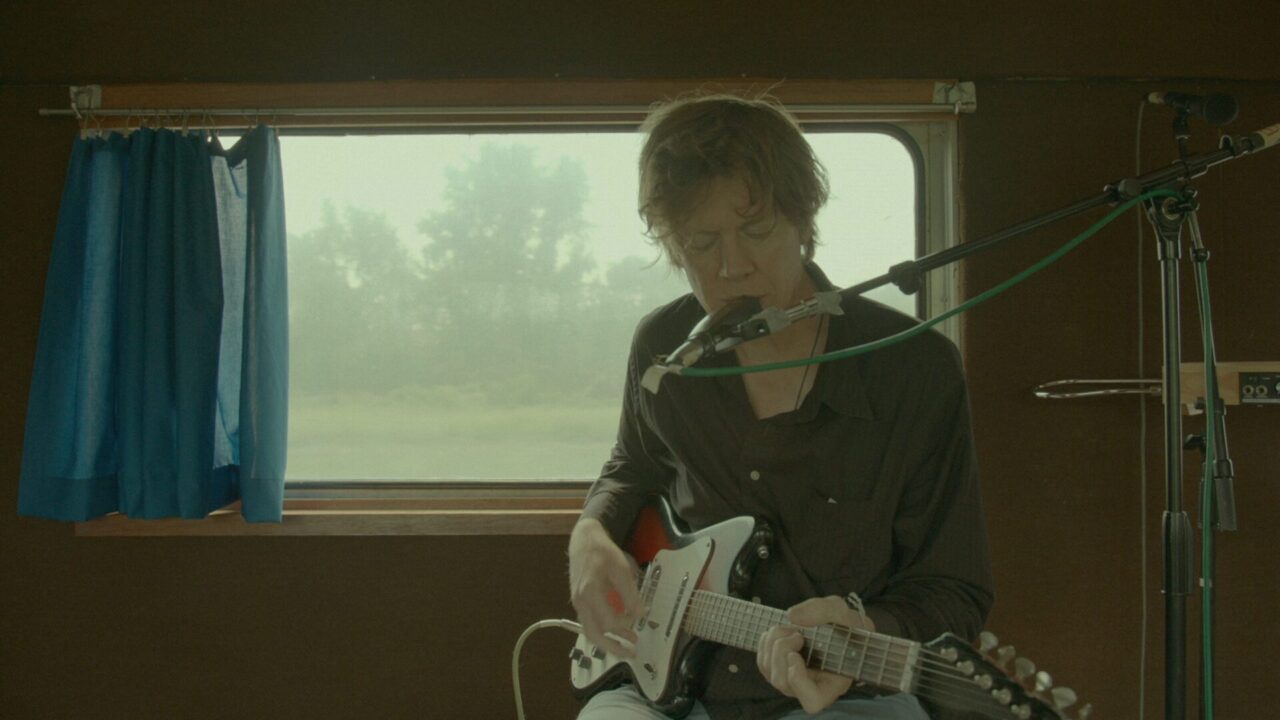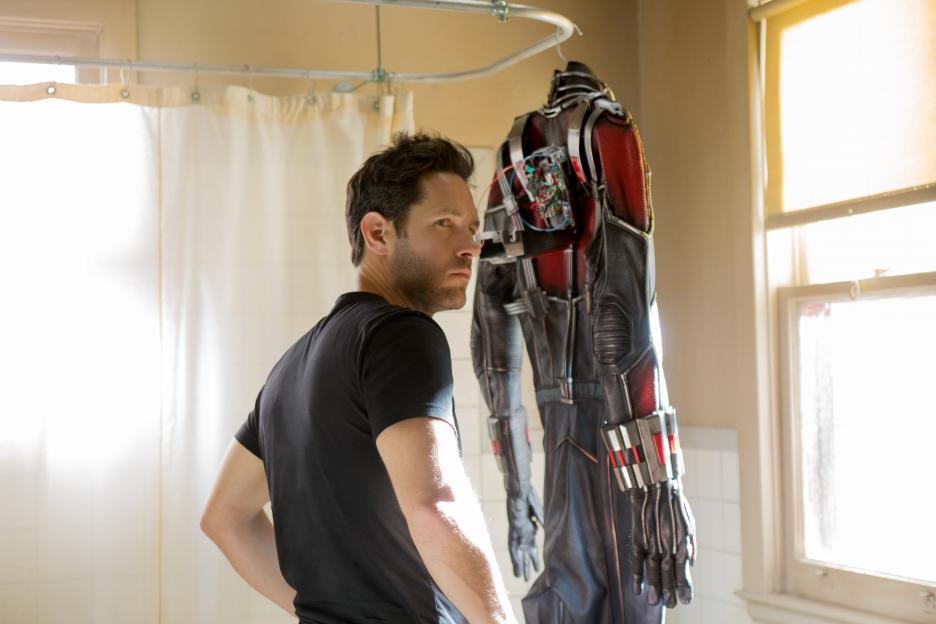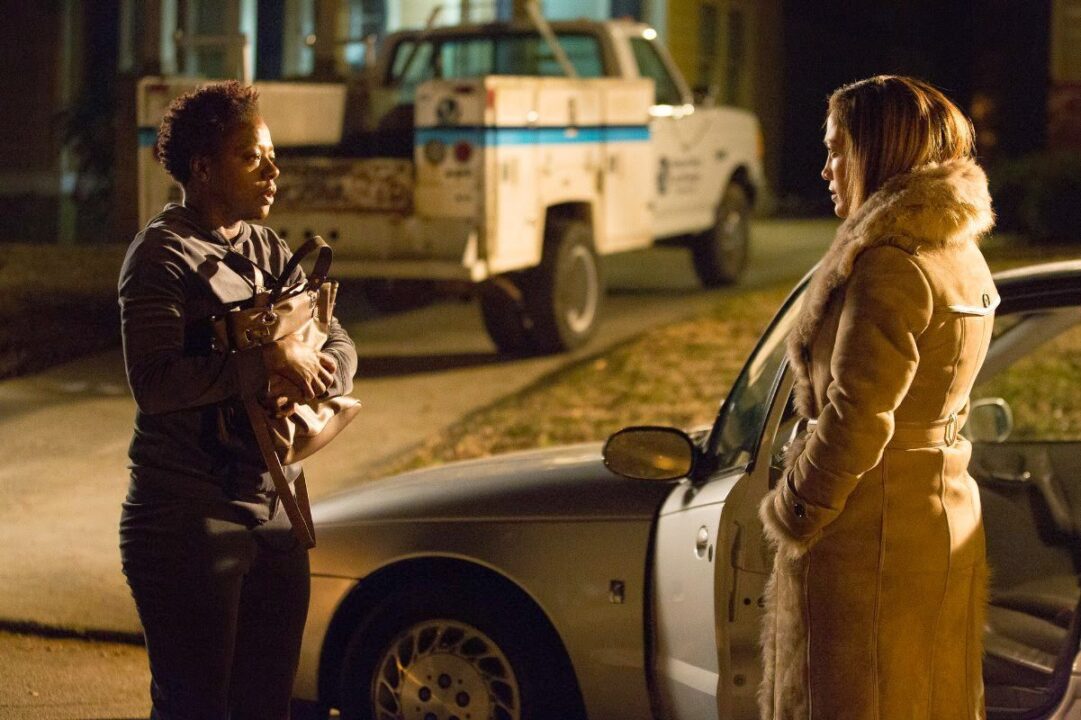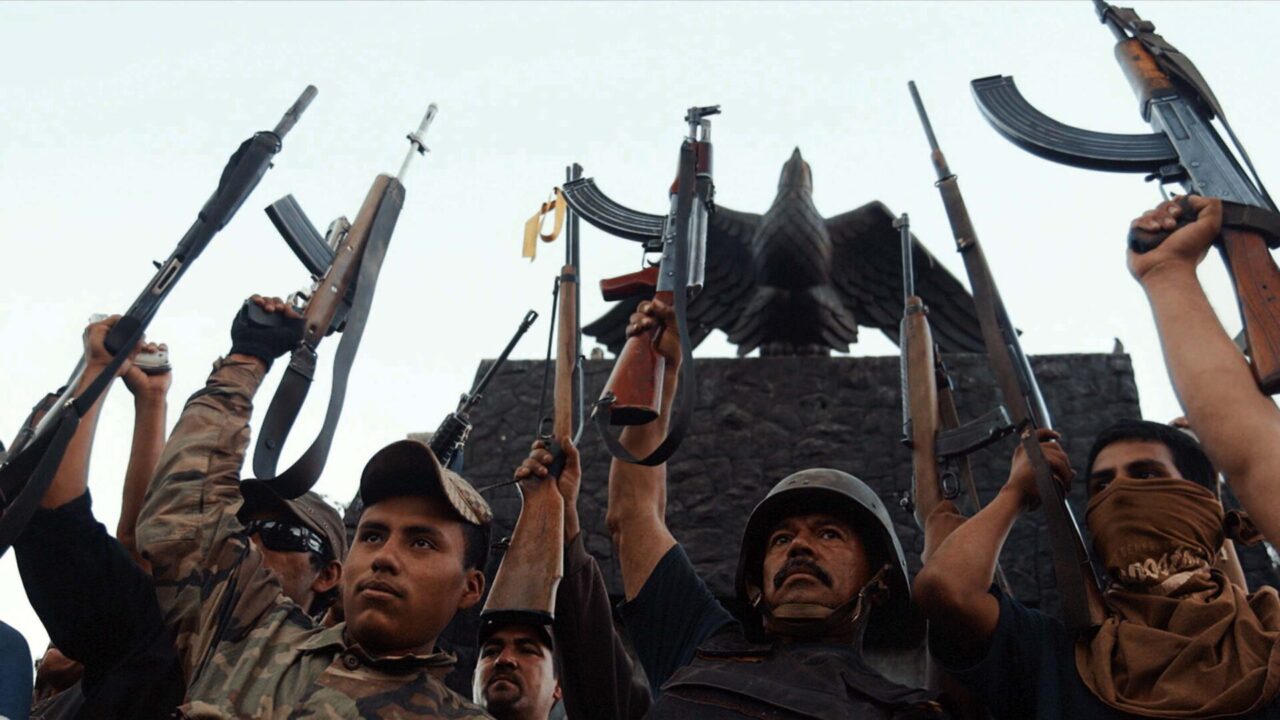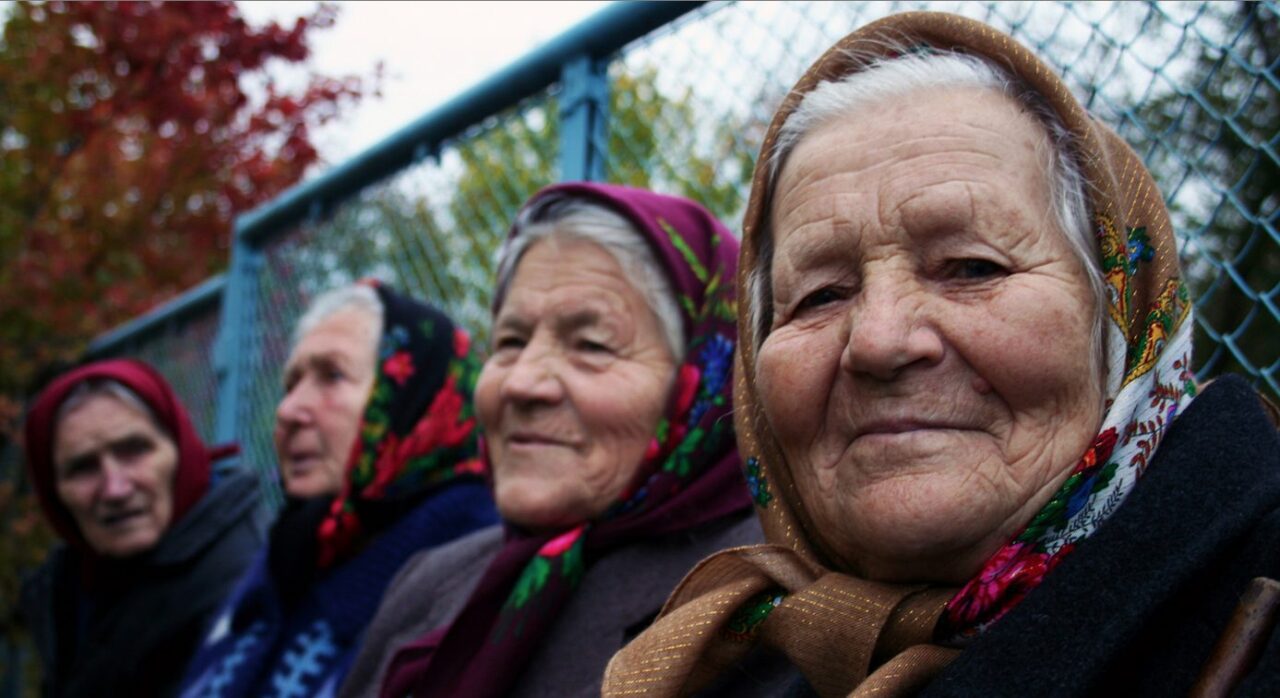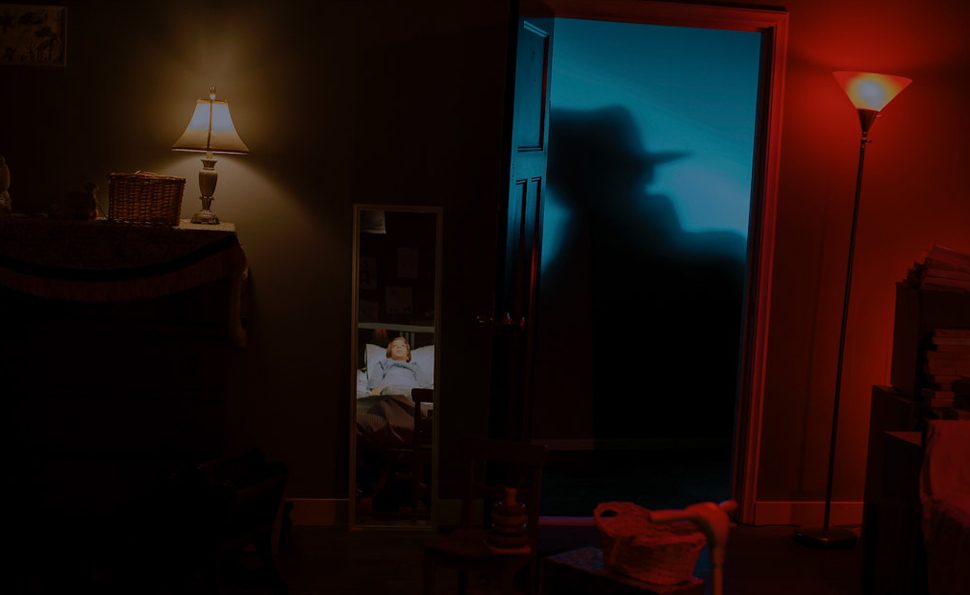Review: 'Station to Station'
The premise alone is enough to draw your attention: Station to Station is 62 one-minute films back to back, all made over the course of a 4,000 mile train trip by a wide array of artists and musicians. The film as a whole is more akin to a curated exhibit with all kinds of types of art and methods of using the medium.
One minute is not a lot of time - therefore the film doesn’t lose its pace because it switches gears so often. While 62 different films may seem completely incoherent, there are two elements which hold the project together. The first is the trip itself: the train ride and the various “happenings” where the train stopped and would display its various artists. A handful dabble into the themes surrounding train travel and the American landscape (not surprisingly these are the best ones) while others focus on the people on the trip. The second piece holding it together is that for the most part the films all keep a similar style, displaying each artist or member one by one, and only a few manage to truly deviate. This is unfortunate in that there are multiple shorts that are similar enough I wonder if the same person directed them, even though each one is given a different credit. By the end of the film, you’ve seen so many, it is difficult to recall the pieces except for a handful of true standouts.
While the art experiment and the journey was probably an enlightening experience for everyone involved, the film never is able to take on as powerful an experience for the viewer.
While the art experiment and the journey was probably an enlightening experience for everyone involved, the film never is able to take on as powerful an experience for the viewer. Because the film is always changing, it is hard to stay connected, and many of the short films are little more than documentations of a given artist. 62 one-minute films by 62 different visionary directors is what you’ll be expecting, only to find that the films are made primarily by visual and musical artists for whom filmmaking is a secondary art. The result is far less memorable than it potentially could be. The handful of the films that truly deviate or take on a more radically unique approach are the standouts, but they are surrounded by less memorable films.
I am also wary of the effectiveness of one minute for conveying information. I admire the experiment, and love the theme of railroad travel (which isn’t utilized nearly as much as it could be), but don’t feel as though the collective results are particularly inspiring. The good news is that if you aren’t too crazy about one of the shorts, it will be over within 60 seconds. The bad news is the same for the more intriguing shorts. Such is the nature of an anthology.
I would love to see more storytellers emulate this experiment, perhaps focusing more on filmmaking as opposed to other art forms. It isn’t to discredit the talent of each of the artists, but it becomes extremely clear for many that their short film doesn’t fully capture their essence the way seeing them live or being on the train with them would bring. Instead, I would love to see a train trip (or something equivalent) of 62 filmmakers who each direct a radically different one minute short all within a same theme. This is what I had expected to see with Station to Station, and unfortunately, the result is less cinematic and more archival. I admire the experiment that this group of people have put together, and would love to see another film that takes its structure up to the next level.
Station to Station opens at the Nuart Theater this Friday.
https://www.youtube.com/watch?v=f_bJP7rExmk
Review: 'Meru'
Documentaries about specific subjects or professions can transcend their field when focused on passionate people. Arctic climbing doc Meru is a banner example of how by showing the ins and outs of climbing told by people who love it, we all can connect as an audience. It also dramatically helps that just about anyone who sees the images taken will experience vertigo: it’s truly breathtaking to watch.
The synopsis: three renowned climbers (Jimmy Chin, Conrad Anker, Renan Ozturk) navigate nature’s harshest elements to ascend Mount Meru, the most technically complex and dangerous peak in the Himilayas.
Not only are these climbers attempting to scale the unconquered shark fin known as Meru, but one of the directors Jimmy Chin is filming while he does it. In a director’s statement on this subject he says, “When you’re making a movie on the mountain, the camera is an added appendage – one you often wish you didn’t have to carry. While shooting Meru, it was a real struggle just to keep the two small cameras we carried from getting destroyed. I always say the rules on filming on a mountain climb are fairly straightforward. Shoot whenever you can. Don’t hold up the team. And don’t drop the camera.” The fact that this expedition is documented on film remains a feat in itself.
It also dramatically helps that just about anyone who sees the images taken will experience vertigo: it’s truly breathtaking to watch.
The difficulty of the climb is expressed in both the variety of terminology used to describe what exactly they’re doing, and that the stakes are naturally raised as the film goes on. To give an example: while Mount Everest is the tallest mountain in the world, you can have a Sherpa carry your load up the whole way. In this case, not only has nobody ever climbed to the top of Meru, but it involves a radical mixture of types of rock climbing amongst treacherous terrain. One area is known as the House of Cards, because if they chisel into the rock too much, the entire face of the rock will crumble.
It is easy for the viewer to get a slight understanding of what this climbing takes, but the main message is just how difficult it is, and the result is gripping.
The only feedback that isn’t positive regarding the film is its structure. Due to the nature of the story, it doesn’t always have the most even story development. The ending ironically lacks the punch that it could easily have created and quickly wraps up before the story even seems complete. Perhaps it is leaving the viewer to fill in the gaps, which isn’t too hard, but a little more natural of closure could have benefitted the story.
Regardless, its hard to deny just how breathtaking the film is to watch and how easy it is to get wrapped into the perilous climbing of Meru. Here is a film you cannot walk away from without feeling a rush of energy and admiration for these thrill seeking climbing masters that inspire the rest of us to get out of our comfort zones a little more often.
Meru opens in theaters this Friday.
https://www.youtube.com/watch?v=YvS6O9lVkkg
Review: 'Ant-Man'
The most recent Marvel movie prior, Avengers: Age of Ultron raised the stakes unimaginably high only to be diluted because we know that an onslaught of Marvel movies are still waiting to be released. Ant-Man, on the other hand, takes the superhero story down to a smaller scale (pun intended) and focuses on a handful of characters instead of on saving an entire universe.
If you’ve been keeping up with the film’s production, then the question that comes to mind is how the film has been affected by the departure of director Edgar Wright. There are still many remnants of a bolder, more eccentric version of the same story. It definitely feels a little more out there than the usual Marvel fare but still remains safely within the wheelhouse. While this will appeal to the mass audiences, the question will always remain of how different Ant-Man could have been under its original director. Regardless, you can see the film without registering any of that drama as you watch.
His superpower is maybe the most visually appealing of any so far...
What the film is best at is fulfilling the premise of the Ant-Man character. His superpower is maybe the most visually appealing of any so far: it’s a genuine blast just to see him discovering his powers, and finding himself at a different scale. The best moment of this is unfortunately shown in the trailer, but it’s still a lot of fun to see on the big screen.
More than most superpowers, his ability to grow and shrink in size is easily able to be captured (better yet understood) on screen and be entertaining, as opposed to something more pugnacious or abstract.
The story itself is pretty mild with another origin story of how a hero came to be. Nothing in this camp feels particularly new, except, as mentioned above, this is a story that comes across as rather small scale. Instead of major set pieces, we spend quite a lot of time with just a handful of characters interacting – fitting for the small nature of this character, but not always the most riveting. The cast all deliver solid but not outstanding performances – although I did find Michael Douglas to be a refreshing addition to the Marvel canon.
In short, Ant-Man is another solid entry into the ever-consistent Marvel Cinematic Universe, which still has yet to have any major misfires, but continues to move closer to complacency with their style. I hope that they can find themselves moving into more unique territory, but if this film is any sign, it is that the opposite direction is more inevitable.
Ant-Man opens in theaters everywhere this Friday.
https://www.youtube.com/watch?v=pWdKf3MneyI
Review: 'Lila & Eve'
In the opening shot of the film we see a drive-by murder of a black teenager, a sight that has become all-too real as of late. However, Lila & Eve is not the story of this character: it is the story of his mother.
In an obvious state of grief and despair after losing her son, Lila (Viola Davis) joins a group for mothers who have lost their children. In the group she finds a connection with Eve (Jennifer Lopez), a group outsider who seems to be the most authentic of the bunch. Eve becomes her best form of support and helps her cope with the fact that not only is her son gone, but the authorities will do nothing to help her solve the murder case.
Their friendship takes a more drastic turn when the two take matters into their own hands and start solving the murder themselves, but not without some collateral damage.
While the supporting cast members each get some moments to shine... this is clearly a vehicle for Davis herself, and she is able to find a great deal of range as a woman attempting to take back control over her life.
Lila & Eve straddles the line between two different types of films. The first is the grieving mother story and the sincere relationships formed by those willing to support her. The second is the vigilante plot, which shows the dangerous spiral that a quest for vengeance can lead to, and a depiction of catastrophic trauma. The separation between the two works well because Lila’s character manages to keep her personal life separate from being a vigilante, and that is how the film places the two as well.
Elements of the film require some suspension of disbelief, but the viewer must wait until the very end before questioning the leaps in logic: this is because what sometimes seems like a plot gap sometimes pays off deliberately. There are still elements where the film feels implausible, but there is enough weight in the subject matter that it doesn’t detract from the viewing experience.
Lastly, a note on the performances. While the supporting cast members each get some moments to shine, (including Viola Davis’s off-screen husband Julius Tennon as her kind neighbor) this is clearly a vehicle for Davis herself, and she is able to find a great deal of range as a woman attempting to take back control over her life. It can’t be ignored that she’s been typecast in similar grieving mother roles before, but that isn’t to deny that she can drive a film independently. I would like to see her find more roles of this depth in future work. For now, I’m content that Lila & Eve is a unique and entertaining new entry into the crime drama genre.
Lila & Eve opens at Sundance Sunset Cinemas, Laemmle Playhouse 7 and VOD this Friday.
https://www.youtube.com/watch?v=ogfry3rFHDw
Director Matthew Heineman on 'Cartel Land'
It's hard to imagine anyone willingly subject themselves to live among some of the most dangerous and violent gangs in the world. Director Matthew Heineman says he had no choice– in order to accurately tell the story of the unfortunate but undeniable presence of drug cartels in Mexico, he had to be patient as he gained the trust of his subjects, whose stories are as somber as they are shocking. A Sundance favorite, Cartel Land is a riveting, on-the-ground look at two modern-day vigilante groups and their common interest in stopping the notorious Mexican cartels. We chat exclusively with Heineman days before the theatrical release of his film, talking about his initial interest in the subject matter, keeping cool in the midst of evil, and getting distribution in Mexico. We begin:
How did you develop your interest in the subject matter?
I read this Rolling Stone article on the subway in New York about the Arizona vigilantes. [At that time] I knew nothing about vigilantes, the border or the drug war and I was fascinated by it. I set out to gain access from Tim "Nailer" Foley who was leading this vigilante group on the Arizona side of the Mexican border and I spent a couple months filming with him. My father actually sent me an article from The Wall Street Journal about the Autodefensas. Right away I knew I wanted to create this parallel about vigilantes on both sides of the border fighting the same common enemy- the Mexican drug cartel. About two weeks later I was down in Mexico, but I had absolutely no idea the journey I would go on, the places I would find myself or the violence that I would witness. Shootouts in the streets of Michoacán, meth labs in the dark desert night, torture chambers... I never imagined I would get these things on film.
How did you prepare for what you were about to experience?
On my last film, Escape Fire: The Fight to Rescue American Healthcare, I think I spent about 8 or 9 months researching before I even picked up a camera. I wanted to make a very different film this time, I wanted to make a vérité film, from the third person, on-the-ground perspective. I wanted to get right in the middle of the action and see the effects that the cartel had on everyday people. So the process was much more [focused on] preparing to shoot in these conditions, like taking as many security precautions as we could.
What was going through your mind while making the film? How did you keep your cool?
It's hard to say, a lot of it was instinctual. I think what kept me "cool" in situations was actually the craft of filmmaking– focusing on exposing, on framing. I guess it calmed me to some degree, but I can't pretend I was really calm. I mean, anyone who has been in that situation knows it's frightening and exhilarating. There were other moments that, to me, were even scarier, like the interview I did with the young woman whose husband was kidnapped by the cartel and chopped up to pieces in front of her. To hear her talk about the horror she witnessed and to be next to this woman who's body was in front of me but who's soul was out of her psychologically messed with me a lot, more than some of the adrenaline-filled moments.

How did you approach the subjects and gain their trust?
In time. A lot of people, especially in Mexico, were covering this story but they come in for a day or two and it's really, really difficult to tell a complicated story in that amount of time. I had the luxury of being down there for almost a year, and forging really deep relationships with people.
Did you encounter people who didn't want to be on camera?
Oh yeah, and that goes back to the blurriness of not knowing who's the good guy and who's the bad guy. The blurry lines between good and evil. At certain times, people didn't want me to show certain things, but I felt like it was important to. I did what I needed to do to tell this story.
TIME MAGAZINE'S COVER PAGE ON FEBRUARY 24, 2014– the same day as the autodefensas anniversary- has the Mexican president with the caption "Saving Mexico". What is your take on that?
There are alternative covers to that magazine cover in which people superimposed images of the doctor [Dr. Jose Mireles] instead of the President with the same caption 'Saving Mexico.' We take so many things for granted here: basic security and justice. In Mexico, that doesn't exist. The judicial system and the police are all operating in collusion with the cartel. People on the ground have an extraordinary distrust of the government, and rightly so.

It's been a little over a year since the film's completion, have there been any updates that you're aware of?
Right after we were done filming and submitting the film to Sundance, 43 students were killed in Guerrero, which is just South of Michoacán, and it provoked this national and international outcry. Although, situations like this had happened numerous times in recent history. This many people killed and the fact that they were students killed by the cartel working directly with the government really provoked an outcry. I don't necessarily see and end to the cycle of violence. As long as there's a demand for drugs in America, there will be a supply of drugs in Mexico.
Have the subjects been able to see the finished film?
'Nailer' saw the film, he came to Sundance for a few days as well. As you can imagine, on the other side of the border Dr. Jose Mireles has been unable to see the film.

How involved were you in the distribution process?
The film premiered at Sundance and I was lucky to get really good reception from that. It played in festivals through the spring and I'm really excited to have the film released theatrically both in the U.S. and Mexico. I'm excited to see it span beyond the film community audience to the general public.
For our review of Cartel Land, click here.
Review: 'Cartel Land'
A great argument in favor of nonfiction storytelling is that often times the truth is even stranger than anything conjured in fiction. Sundance alum Cartel Land, executive produced by Kathryn Bigelow (The Hurt Locker, Zero Dark Thirty), is one such documentary as it follows two different sides of the undeniably crooked war on drugs in Mexico.
The film’s first few minutes show images and situations that seem unbelievable; a mass funeral for an entire group of innocent people who were murdered by the elusive cartels is a harsh reality check of the casualties of this endless war. This also serves as a signal to the audience that we are in for an education unlike anything we knew before.
The cartels are introduced as powerful outsiders and are seldom shown onscreen. Instead, the focus of the film will be on groups of people who are taking matters into their own hands: when the government can’t protect the people, who will?
Heineman has miraculously managed to be right alongside numerous firefights, protests, and intimate conversations that immerse the viewer into the tense situation at hand.
We get two different answers from both sides of the US-Mexico border. The first is an American vigilante border patrol organization called Arizona Border Recon, who is full of bigotry and misguided law. Their leader Tim Foley, known as “Nailer,” is hardly a representation of good morals, yet is the tamest in this terrifyingly bloodthirsty group of American self-proclaimed soldiers.
On the Mexican side (though over 1,000 miles from the border, deep into its own country of Michoacán) is an anti-cartel volunteer group known as the Autodefensas, led by a charismatic, spirited leader named Jose Manuel Mireles, or “El Doctor.” The Autodefensas start out as a small uprising of citizens who know that they can’t rely on the police to stop the cartels, so they take matters into their own hands. As we watch the organization expand and gain power, inevitably it becomes more difficult to maintain and corruption naturally cracks into all levels.
The reason these stories are so compelling is because of the level of access that director Matthew Heineman has gained. Many documentaries lose attention when the most dramatic moments are happening off-screen. Heineman has miraculously managed to be right alongside numerous firefights, protests, and intimate conversations that immerse the viewer into the tense situation at hand.
The primary characters are shown onscreen without us being told who is trustworthy and who isn’t, and as we see more information, it becomes even clearer how impossible it is to trust anyone involved in this situation.
By the time the film is over, you will have a new understanding of just how deep-seated the corruption in these wars has become. What is more baffling, and another reason why this is essential viewing, is that these stories (like many of global importance) are being ignored by mainstream media in all likelihood because of how unbelievable they are.
Cartel Land is a movie that inspires the viewer to think a little more carefully about what types of leaders are trustworthy, and exposes a horrific truth with humane precision that would otherwise by brushed over by mainstream media.
Cartel Land opens this Friday, July 10th at The ArcLight Hollywood.
https://www.youtube.com/watch?v=6JD7hPM_yxg
Review: 'The Babushkas of Chernobyl'
Premiering at the LA Film Festival, and receiving a jury award for Directing, is the exploratory documentary The Babushkas of Chernobyl, a look at the repercussions of radioactive activity on culture and society.
In 1986, the Chernobyl Power Plant exploded, exposing a radius of 25 kilometers to toxic radiation. Plants, buildings, water, and people were all at risk. The result was a mass forced evacuation, and hundreds of people were unknowingly removed from where they had been living for hundreds of years. Many people's lives were ruined in the process, never able to return home. For a brave few, there was no choice but to illegally return home despite the potential danger, and that is exactly what they did. This is their story.
Approximately 200 people currently live in the danger zone, and today the level of radiation is just as strong as it was back then. Peculiarly, the majority of these people are women, and all of them are elderly, known as Babushkas which is the Russian and Polish word for grandmother. Despite the potential dangers, their lives continue in quiet isolation within the radiation zone, and it does not stop them from any other activity.
It isn’t an understatement to say that the film is fascinating on all levels.
Because of their ages, the government has allowed them to stay, and they are supported with sparse care. Scientists take samples to see what the radiation looks like in everything they use: food, soil, water, clothing. To them, there is no question that they would prefer to be in their homeland despite the risk. Astonishingly, they live healthy, jovial lives isolated from other worldly dangers. Because of their isolation, they live incredibly close to the land, growing their own food, raising their own meat, brewing their own moonshine, and living with an understanding of the natural world exponentially better than those of us in modern urban environments.
The community is almost entirely female and they band together and accomplish tasks that are impressive for women who are all around the age of 80.
These primary subjects are fascinating and make for incredible subject matter perfect for a documentary. Along with their interviews, we get to see others affected by this disaster. This includes the people who were evacuated and forced to restart their lives (to bitter results), scientists and government workers whose entire work is focused on the area’s radiation, and a group of rebellious teenagers whose pastime is illegally sneaking into these abandoned cities. It isn’t an understatement to say that the film is fascinating on all levels.
Documentaries have the potential to display cultural significance matched with facing the consequential realities of the modern world. Drastically due to the subject manner but in no doubt aided by keen eyed filmmaking, Babushkas is a captivating documentary that displays relevance beyond the borders of the Chernobyl disaster. The film asks questions about the chemicals we expose ourselves to unknowingly, and a cautionary tale of what can happen when massive chemical activity is at play.
For a short 70 minutes, this documentary is filled to the brim with fascinating characters, themes, and exploration of an area. Documentaries of this caliber do not come around often and are worth noting with high esteem. Much can be gained from viewing The Babushkas of Chernobyl, an unforgettable documentary worthy of acclaim.
The Babushkas of Chernobyl had its World Premiere on Sunday, June 14th, at LA Film Fest. Info here.
https://www.youtube.com/watch?v=i5pLPUH5eDs&feature=youtu.be
Review: 'The Nightmare'
Despite many classic scary movies being based on true stories, the hybrid of ‘horror’ and ‘documentary’ has rarely been tread upon. Using a combination of interviews and recreated footage, The Nightmare aims to both inform the audience and provide genuine scares, and it succeeds with both.
We are introduced to a handful of individuals who all share their varied experience with sleep paralysis, a haunting that occurs while one is sleeping but feels incredibly lucid. The beginning of the documentary takes a while to get traction as the stories initially seem repetitive. At first, the recreated footage is implausible enough that it isn’t scary. However, as the film continues on, something about the concept and its no-nonsense execution managed to creep into my psyche enough to actually be scary. There are a few easy pop-out scares, but along with that, the reality that is presented truly begins to leave an unsettling notion. In simpler terms, what starts out as a bit ridiculous actually turns into something genuinely scary.
In simpler terms, what starts out as a bit ridiculous actually turns into something genuinely scary.
As the film moves on and settles in as chilling, it divides itself into various sections. There is a part in the film that talks about the potential science of this problem, and how the haunting may come from another reality. I would have enjoyed more of this. There’s also a chunk devoted to allusions in both art and pop culture. However, the film eventually spirals into the spiritual element of the paralysis; some victims found faith through these terrifying circumstances. It does beg the question of if this (like many horror movies) alienate those who don’t have the same faith beliefs as the subjects. That is for the individual to decide.
Overall, The Nightmare– directed by Rodney Ascher (Room 237)– provides chills while still being thought-provoking, and makes you thankful you’ve never encountered what these people are dealing with. The horror documentary combination may have limitations, but this one manages to work surprisingly well.
The Nightmare opens today at Laemmle Theatres.
https://www.youtube.com/watch?v=DoPsjWqvwT4

